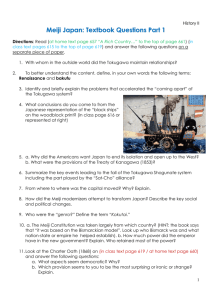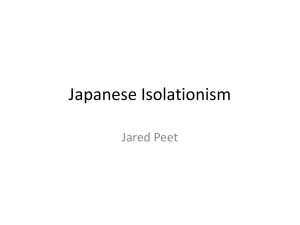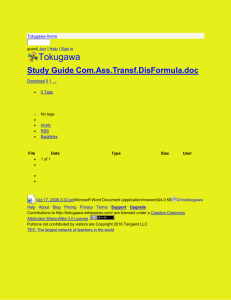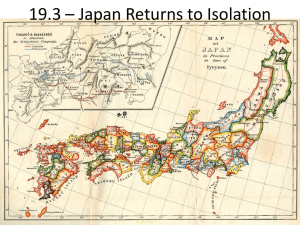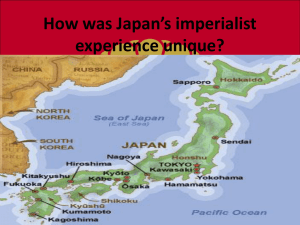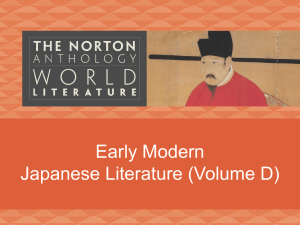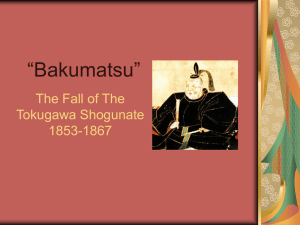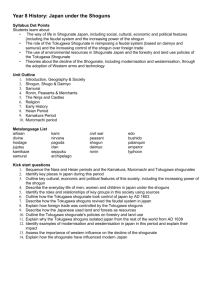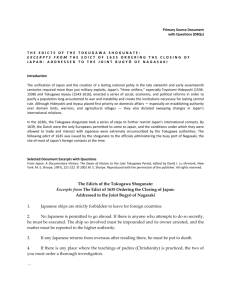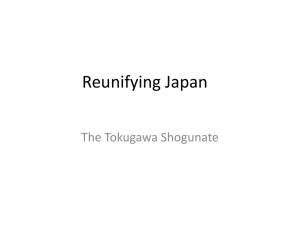Sample essay 7C Hele..
advertisement
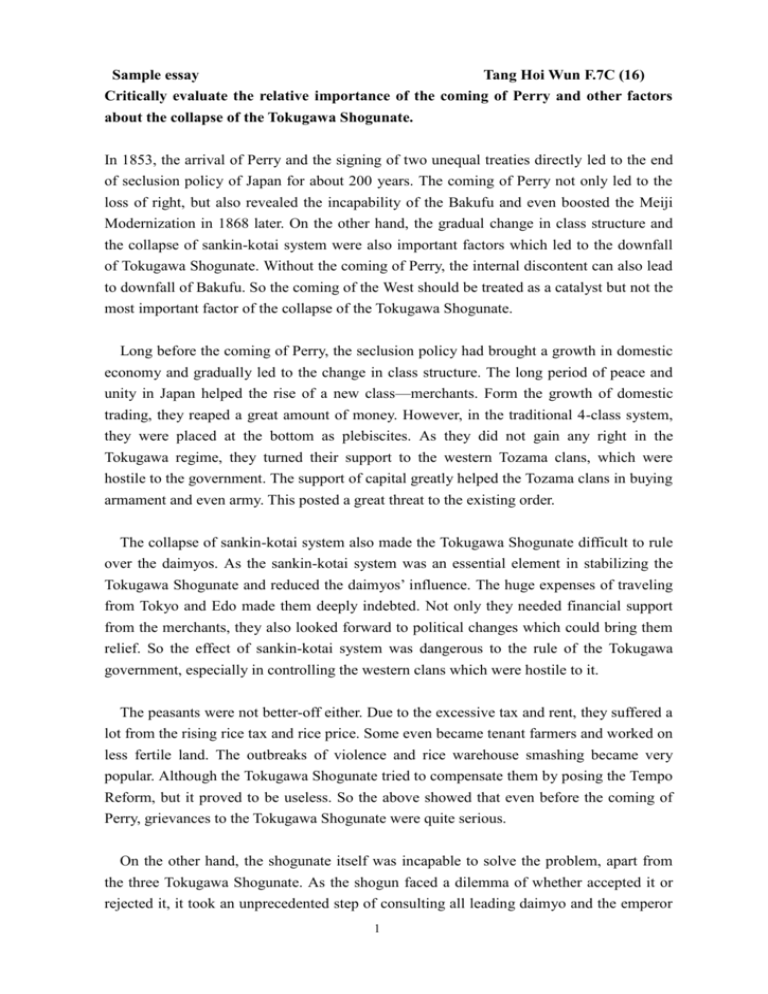
Sample essay Tang Hoi Wun F.7C (16) Critically evaluate the relative importance of the coming of Perry and other factors about the collapse of the Tokugawa Shogunate. In 1853, the arrival of Perry and the signing of two unequal treaties directly led to the end of seclusion policy of Japan for about 200 years. The coming of Perry not only led to the loss of right, but also revealed the incapability of the Bakufu and even boosted the Meiji Modernization in 1868 later. On the other hand, the gradual change in class structure and the collapse of sankin-kotai system were also important factors which led to the downfall of Tokugawa Shogunate. Without the coming of Perry, the internal discontent can also lead to downfall of Bakufu. So the coming of the West should be treated as a catalyst but not the most important factor of the collapse of the Tokugawa Shogunate. Long before the coming of Perry, the seclusion policy had brought a growth in domestic economy and gradually led to the change in class structure. The long period of peace and unity in Japan helped the rise of a new class—merchants. Form the growth of domestic trading, they reaped a great amount of money. However, in the traditional 4-class system, they were placed at the bottom as plebiscites. As they did not gain any right in the Tokugawa regime, they turned their support to the western Tozama clans, which were hostile to the government. The support of capital greatly helped the Tozama clans in buying armament and even army. This posted a great threat to the existing order. The collapse of sankin-kotai system also made the Tokugawa Shogunate difficult to rule over the daimyos. As the sankin-kotai system was an essential element in stabilizing the Tokugawa Shogunate and reduced the daimyos’ influence. The huge expenses of traveling from Tokyo and Edo made them deeply indebted. Not only they needed financial support from the merchants, they also looked forward to political changes which could bring them relief. So the effect of sankin-kotai system was dangerous to the rule of the Tokugawa government, especially in controlling the western clans which were hostile to it. The peasants were not better-off either. Due to the excessive tax and rent, they suffered a lot from the rising rice tax and rice price. Some even became tenant farmers and worked on less fertile land. The outbreaks of violence and rice warehouse smashing became very popular. Although the Tokugawa Shogunate tried to compensate them by posing the Tempo Reform, but it proved to be useless. So the above showed that even before the coming of Perry, grievances to the Tokugawa Shogunate were quite serious. On the other hand, the shogunate itself was incapable to solve the problem, apart from the three Tokugawa Shogunate. As the shogun faced a dilemma of whether accepted it or rejected it, it took an unprecedented step of consulting all leading daimyo and the emperor 1 to seek for national consent. This was a fatal mistake of the Bakufu as it opened government’s policies to public discussion and criticism. Traditionally, the shoguns dominated the rule and the decisions of all matters. As it gave the chance to discuss national matters, later it led to active intervention of national matters by the daimyo and the emperor. The unequal treaties also showed the incapability of Tokugawa Shogunate clearly. As it had no choice but to sign the treaty of Kanagawa in 1854 and the Treaty of Edo in 1858, the foreign powers granted extra-territoriality and the most- favoured – nation treatment, the inability to cope with foreign affairs angered many Japanese and exposed the weakness of the Bakufu. The hatred to the Bakufu and the foreigners led to the Sonno-Joi movement later and threatened the rule of Bakufu. The unequal treaties signed also opened Japan completely. With the end of seclusion policy, Japan experienced dramatic change socially and economically. When the peasants suffered even more after the treaties, it led to a series of attacks to the Bakufu. The opening of Japan on the other hand brought the influence of western ideas to Japan. As some samurai I Satsuma and Choshu had learnt from abroad, it began to question the legimacy of the ruling of Tokugawa and started the Sonno-Joi Movement in 1858 onwards. Based on Shintoism, they aimed at the restoration of the emperor. For the Joi movement, they attacked the foreigners aiming at the termination of unequal treaties based on the anti-foreign feeling. However, the attack to foreigners only led to bombardment of Kagoshima and Shimonoseki. After the two bombardments, Satsuma and Choshu alliance became more realistic and began to unite together as Sat-cho alliance. As the stability of the western areas was long relied on the hostilities of Satsuma and Choshu, with the alliance of these 2 clans, Tokugawa had no power to stop their attack. Even the idea of “Union of the Court and Bakufu” failed. At last, the combined forces led to the Meiji Restoration in 1868 and the downfall of Tokugawa Shogunate. All in all, the downfall of Tokugawa Shogunate was largely due to its deep-rooted problems in the class system. Even without the coming of Perry, the Tokugawa Shogunate was doomed to fall because of internal discontent. The coming of Perry only acted as a catalyst and directly led to the downfall of the Tokugawa Shogunate. So the coming of Perry was important in the downfall of Tokugawa Shogunate, but without this factor, the Tokugawa Shogunate would still fall because of internal discontent. 2
